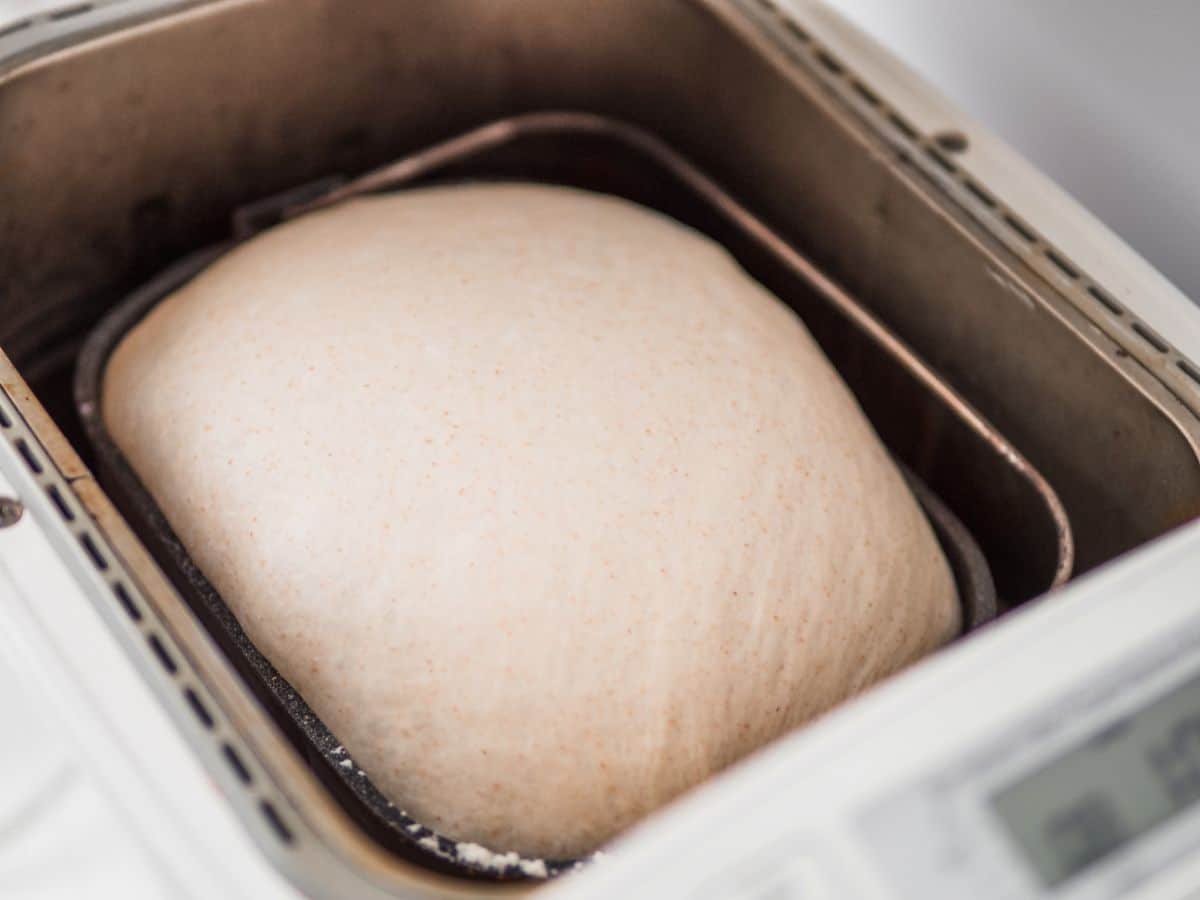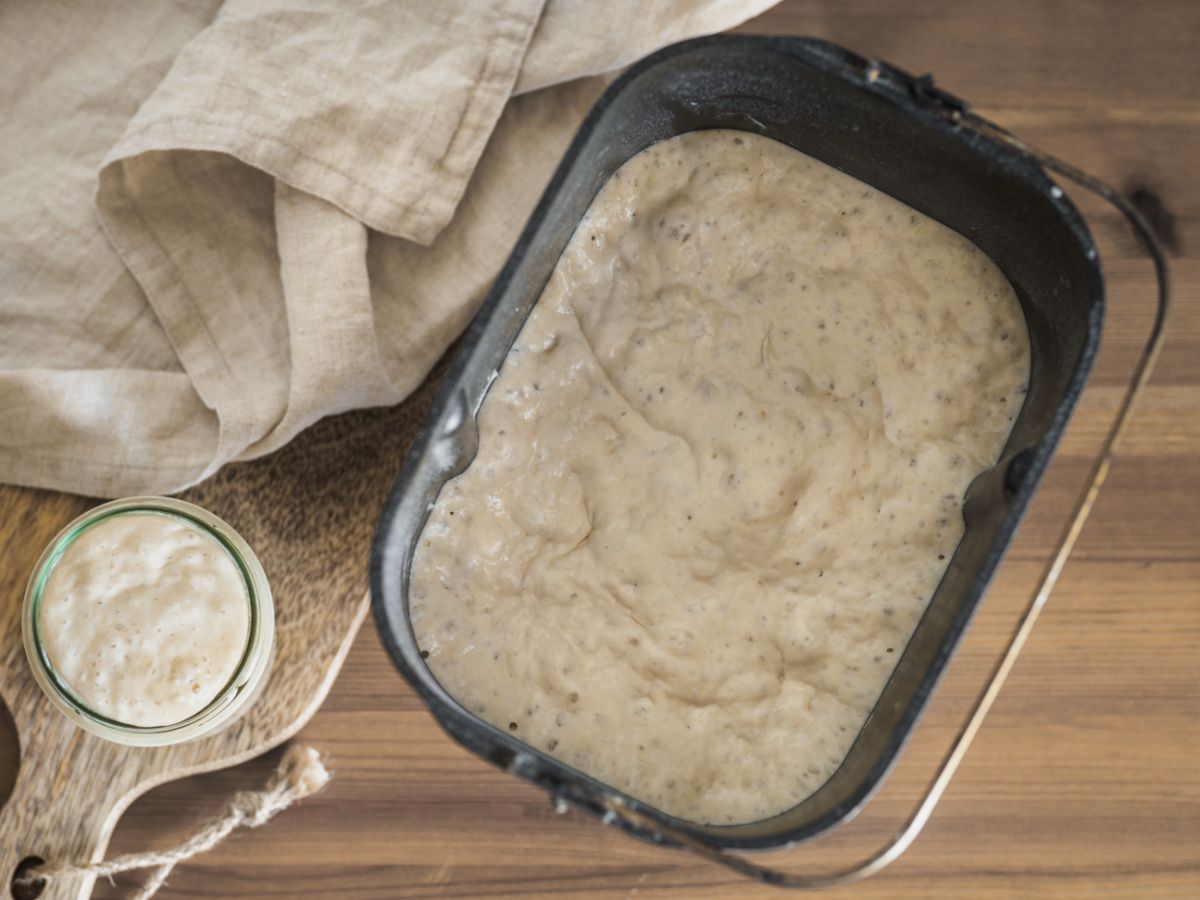Bread machines are great kitchen appliances that combine convenience and flexibility. By now, you must have discovered the loaves of bread you can make. The first step is to understand the dough cycle on your machine. If you’re not sure what the dough cycle is, this article will help you grasp the basics.

So, how long is the dough cycle on a bread machine? A typical dough cycle takes 40 minutes to 1 hour. While most bread machines come with programmed dough cycles, you can also customize them. The dough cycle saves a lot of work and comes in handy when you want to shape the bread yourself.
Because the bread machine works with a timer, it will do the mixing for you. And depending on the bread you’re making, the dough rises for 5-40 minutes.
Since the machine handles all the critical steps in bread making, it will do the kneading. As you already know, the kneading process is time-consuming and comes with lots of mess. To eliminate any guesswork, a great machine will make some audible beeps.
After kneading, you should allow the dough to rise. For best results, cover the dough with a plastic wrap and let it rest for 30-40 minutes.
This article may contain affiliate links. As an Amazon Associate, I earn from qualifying purchases. Please take that into account.
- Dutch oven
- Large mixing bowl
- Measuring cups and spoons
- Bread thermometer (fancy or a budget one)
- Scoring lame
Extra (nice to have):
- Kitchen scale
- Dough scraper and bowl scraper (yes, they are different)
- Cooling rack
- Baking stone (you don’t need a dutch oven if you use this)
👉Learn how to make bread and pizza with this awesome book.
Before the dough rises the 1st and 2nd time, you should work it into the desired shape. Every bread professional will tell you that if you want to control the size of your bread, the dough cycle is the way to go. Most cycles allow for a second kneading.
Start watching the dough 10-15 minutes into the dough cycle. Make sure it doesn’t have a liquid-like top nor it’s too dry.
A quick test is to touch the dough with your finger. If it comes back coated, then the dough is too wet. Similarly, if the dough feels like poking a ball it’s too dry. To put it succinctly, the dough should form a cohesive unit. If this is not the case, you may have to add more flour or water.
The tricky part is timing. But once you know how long the dough takes to rise, you’re good to go. Perhaps the best way to approach this task is to take the kitchen timer and put it in stopwatch mode.
As you start your bread machine, put it in timer mode. The idea is to gauge the amount of time when you press start until the final rise.
Most bread machines show a timeline of steps like knead 20 minutes, 1st rise 30 minutes, 2nd rise 15 minutes, etc. When the machine starts momentarily, it will knock down the dough which means the final rise is about to start. Stop the timer and check the time.
Does ingredient order affect dough cycle time?
Yes. Most bread recipes have specific order on how you should add the ingredients – flour, liquid, salt, yeast, and more. So, does this affect dough cycle time? Ideally, a change of ingredients can affect the dough cycle. For example, if a recipe calls for all-purpose flour but you use whole wheat flour it will affect the rising time of the dough.
This is because different flours have a varying amounts of moisture and gluten. On the other hand, you should not substitute regular yeast with instant yeast.
Each will affect the time taken to complete the dough cycle. It’s important that you stop the machine before it goes to the baking cycle. When you learn how to gauge the dough, you’ll enjoy using your bread machine. If you’re just getting started, use a simple recipe.
Why the dough cycle on your bread machine takes too long

Sometimes, the dough cycle can take more than an hour. If you’ve read the instruction manual, you’ll see the manufacturer recommends that you let the dough rise after you take it out of the machine.
Ideally, the dough machine mixes the dough and allows it to rise. If you don’t like the shape of the pan, you can transfer the dough in a normal bread pan. Make sure you allow the dough to rise a second time before you bake.
The time taken to complete the dough cycle will depend on your bread machine. Also, if there’s more kneading and rising, then the cycle will take longer.
Another contributing factor is temperature. If you’re making your dough when it’s too cold, it will contract to a smaller size. This will affect the dough cycle.
When the dough takes too long as it kneads, you should open the lid of your bread machine. The truth is that nothing bad will happen to the dough when you poke it.
Before the final rise, you should reshape the bread. This will prevent ski-slope loaves. If you don’t like the shape, take it out of the bucket and shape it into a nice symmetrical log.
You should not limit yourself to the traditional loaf shape. In most cases when you add ingredients like eggs, milk, and cheese, the machine can delay the cycle.
Furthermore, too little yeast will compromise the dough cycle. To increase your chances of making the perfect dough, you can double the yeast, cut back on the amount of salt, and use the longest cycle of the machine.
Note: the cycle can help you to optimize on dough characteristics. Sometimes, the dough cycle can be confusing if you don’t know how to use a specific recipe.
Why you should stick to the dough cycle
Dough cycle will help you mix the ingredients in your baking recipe. It gives more control, better rising, and more shaping options. Bread machines will knead the dough and allow it to rise.
And once the cycle is complete, you should remove the dough. The cycle will depend on the model of the machine. Some are high-speed machines while others mimic the hand-mixing action.
During the mixing process, the dough incorporates all the ingredients before the kneading process begins.
If you’re the kind of a person who likes to “set and forget”, then you may not get the best outcome. Keep poking the dough as it rises to learn how your machine works.
Remember, the dough cycle allows you to remove the dough from the bread machine after proofing. This is crucial if you want to make savory, sweet bread.
Wrapping it up
Bread machines are suitable for both seasoned and first-time bakers. It can be a welcome shortcut for those who don’t want to make the dough the standard way.
When making a dough, you should not exceed the capacity for a particular setting. And once you’re acquainted with your machine, be sure to follow the above tips if you don’t have a manual on hand.
